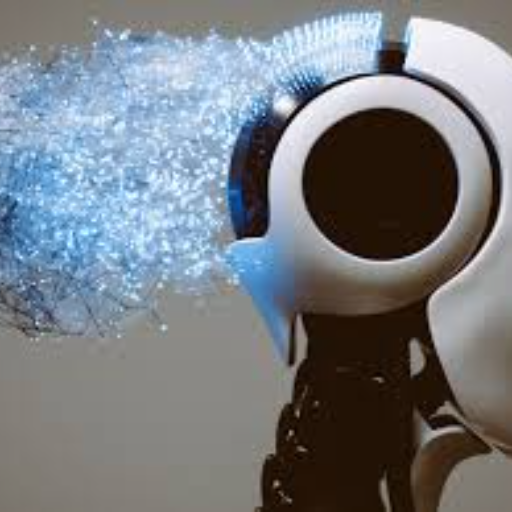Deep Learning-AI-powered deep learning tool
AI-Powered Deep Learning for All
Related Tools
Load More
Machine Learning
A machine learning, deep learning, and data science assistant for learning, practicing, and developing algorithms.

Deep Learning Master
Guiding you through the depths of deep learning with accuracy and respect.

Machine Learning
The most advanced, sophisticated, intelligent, and complete Machine Learning expert.

AI Explains AI
Public AI tutor with interactive, accessible AI education for all.

Python Deep Learning Assistant
A GPT to help users with some of the most popular deep learning frameworks.

Deep learning and Neural networks expert
an experienced teacher of the Deep learning and Neural networks fields
20.0 / 5 (200 votes)
Introduction to Deep Learning
Deep Learning is a subfield of machine learning that focuses on algorithms inspired by the structure and function of the brain, known as artificial neural networks. It involves layers of computations that learn from data to identify patterns, make predictions, and extract features. Unlike traditional machine learning methods, deep learning models can automatically discover representations from raw data, such as images, text, or sound, which makes them particularly powerful for complex tasks. For example, in image recognition, a deep learning model can identify and categorize objects within pictures, such as distinguishing between a cat and a dog. In natural language processing, it can translate languages or analyze sentiment in text. These capabilities are achieved through the hierarchical architecture of neural networks, where each layer progressively extracts more abstract features from the input data.

Main Functions of Deep Learning
Image Recognition
Example
Classifying images into categories like animals, vehicles, or facial recognition.
Scenario
In healthcare, deep learning models are used to analyze medical images for diagnosing diseases like cancer by detecting anomalies in X-rays or MRIs. In security, they are used for facial recognition to enhance surveillance and identification systems.
Natural Language Processing
Example
Language translation, sentiment analysis, and speech recognition.
Scenario
Customer service chatbots use deep learning to understand and respond to user inquiries effectively. Machine translation services, like Google Translate, employ deep learning to convert text from one language to another accurately. Sentiment analysis helps businesses understand customer opinions from social media or reviews.
Predictive Analytics
Example
Forecasting future trends based on historical data.
Scenario
In finance, deep learning models predict stock prices and market trends, aiding in investment decisions. In supply chain management, they forecast demand for products, helping companies optimize inventory and reduce costs.
Ideal Users of Deep Learning Services
Data Scientists and Machine Learning Engineers
These professionals use deep learning to build models that solve complex data-driven problems. They benefit from deep learning's ability to handle large datasets and perform tasks that require high-level abstraction, such as image and speech recognition or predictive analytics. Their work often involves designing and training neural networks, and deep learning provides them with powerful tools and frameworks like TensorFlow and PyTorch to achieve their goals.
Businesses and Enterprises
Companies across various industries use deep learning to enhance their operations and services. For instance, e-commerce platforms leverage it for product recommendations and fraud detection, while healthcare organizations use it for diagnostic tools and personalized treatment plans. These users benefit from deep learning's capacity to improve efficiency, accuracy, and scalability in processes such as customer service, logistics, and data analysis.

Guidelines for Using Deep Learning
Visit aichatonline.org for a free trial without login, no need for ChatGPT Plus.
Explore the website and take advantage of the free trial to access AI tools and resources without needing to log in or subscribe to any paid services.
Understand the prerequisites.
Familiarize yourself with the basics of deep learning, including neural networks, frameworks like PyTorch or TensorFlow, and relevant programming languages such as Python.
Choose a specific use case.
Identify the problem you want to solve using deep learning, whether it's image classification, natural language processing, or predictive analytics.
Select and preprocess your data.
Gather and prepare the data for training. This includes cleaning, normalizing, and splitting the data into training, validation, and test sets.
Train and evaluate your model.
Use a deep learning framework to build, train, and fine-tune your model. Evaluate its performance using appropriate metrics and iterate as necessary to improve accuracy.
Try other advanced and practical GPTs
Coder
AI-Powered Coding Assistance

HTML to FlocssSCSS
AI-powered HTML to FlocssSCSS conversion.

Clean My HTML
AI-powered HTML cleanup for efficiency

HTML Coder
Efficient, SEO-optimized web coding with AI.

Expert HTML/CSS/JAVA
AI-powered coding assistant for web developers.

Bible Scholar
AI-powered Insights for Bible Study

Deep analysis
AI-driven insights at your fingertips.

Gooogle Search
AI-powered search for smarter results

Consensus Search
AI-Powered Academic Research Tool

Image Search
Discover the perfect image with AI

Super Describer
Detailed, AI-powered image descriptions

Create Your PPT Presentations
AI-Enhanced Scientific Presentations

- Data Analysis
- Automation
- Predictive Modeling
- Image Processing
- Speech Recognition
Deep Learning Q&A
What is deep learning?
Deep learning is a subset of machine learning involving neural networks with many layers. It excels in handling large amounts of structured and unstructured data, allowing for tasks such as image recognition, natural language processing, and more.
How does deep learning differ from traditional machine learning?
Traditional machine learning relies on manual feature extraction, while deep learning automatically extracts features through multiple neural network layers, often resulting in more accurate models for complex tasks.
What are common applications of deep learning?
Deep learning is commonly used in applications like image and speech recognition, natural language processing, autonomous vehicles, and recommendation systems.
Which frameworks are best for deep learning?
Popular deep learning frameworks include TensorFlow, PyTorch, Keras, and MXNet. Each has its strengths, with TensorFlow and PyTorch being widely used in research and industry.
How do I start learning deep learning?
Begin by learning Python and understanding the basics of machine learning. Then, move on to studying neural networks and deep learning concepts, utilizing online courses, tutorials, and frameworks like PyTorch or TensorFlow.